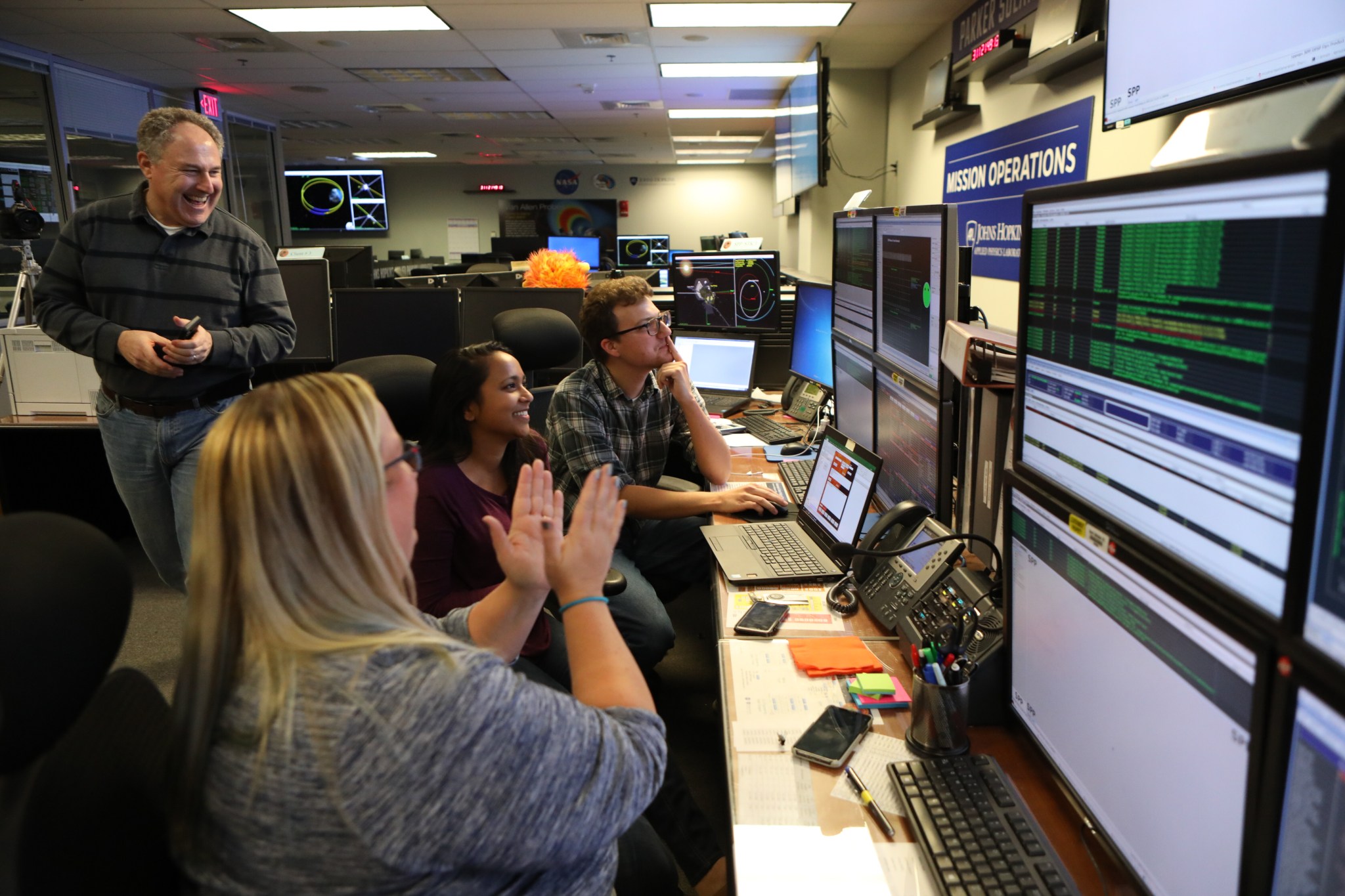Parker Solar Probe is alive and well after skimming by the Sun at just 15 million miles from our star’s surface. This is far closer than any spacecraft has ever gone — the previous record was set by Helios B in 1976 and broken by Parker on Oct. 29 — and this maneuver has exposed the spacecraft to intense heat and solar radiation in a complex solar wind environment.
“Parker Solar Probe was designed to take care of itself and its precious payload during this close approach, with no control from us on Earth — and now we know it succeeded,” said Thomas Zurbuchen, associate administrator of NASA’s Science Mission Directorate at the agency headquarters in Washington. “Parker is the culmination of six decades of scientific progress. Now, we have realized humanity’s first close visit to our star, which will have implications not just here on Earth, but for a deeper understanding of our universe.”
Mission controllers at the Johns Hopkins University Applied Physics Lab received the status beacon from the spacecraft at 4:46 p.m. EST on Nov. 7, 2018. The beacon indicates status “A” — the best of all four possible status signals, meaning that Parker Solar Probe is operating well with all instruments running and collecting science data and, if there were any minor issues, they were resolved autonomously by the spacecraft.
At its closest approach on Nov. 5, called perihelion, Parker Solar Probe reached a top speed of 213,200 miles per hour, setting a new record for spacecraft speed. Along with new records for the closest approach to the Sun, Parker Solar Probe will repeatedly break its own speed record as its orbit draws closer to the star and the spacecraft travels faster and faster at perihelion.
Credit: NASA/JHUAPL
Download this video in HD formats from NASA Goddard’s Scientific Visualization Studio
At this distance, the intense sunlight heated the Sun-facing side of Parker Solar Probe’s heat shield, called the Thermal Protection System, to about 820 degrees Fahrenheit. This temperature will climb up to 2,500 F as the spacecraft makes closer approaches to the Sun — but all the while, the spacecraft instruments and systems that are protected by the heat shield are generally kept in the mid-80s F.
Parker Solar Probe’s first solar encounter phase began on Oct. 31, and the spacecraft will continue collecting science data through the end of the solar encounter phase on Nov. 11. It will be several weeks after the end of the solar encounter phase before the science data begins downlinking to Earth.
By Sarah Frazier
NASA’s Goddard Space Flight Center, Greenbelt, Md.



























